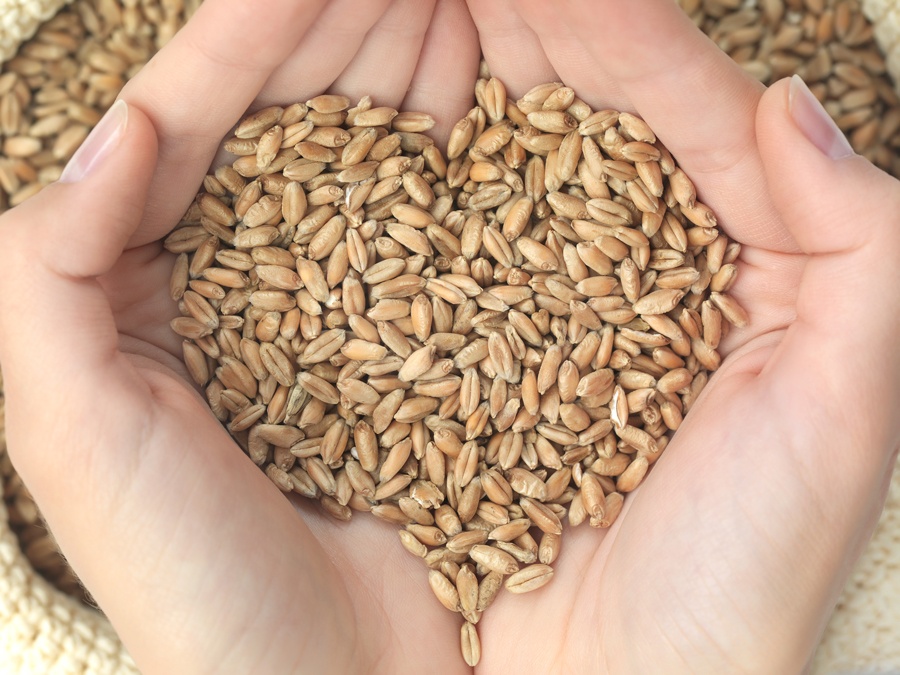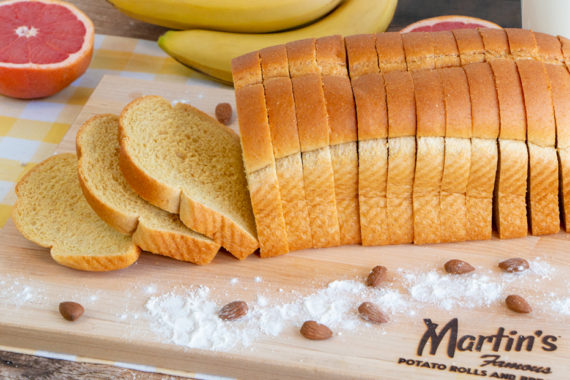
Our blog post this week is courtesy of Grain Foods Foundation. Enjoy!
Everyone is on the hunt for the latest superfood, yet sometimes nutrient-rich foods are hiding in plain sight. Health professionals agree that it is the total diet that is important, and “all foods fit” to contribute to our health at every age. A tasty, healthy, and enjoyable pattern of eating is the goal for all Americans and these three attributes are all possible.1 And here is today’s most important message: delicious bread and rolls are an important – even essential – part of eating a tasty, healthy, and enjoyable diet!
Researchers have completed several recent studies that support the importance of bread and rolls in a nutritious diet. (The results might surprise those who think carbohydrates, and especially grain foods like bread and rolls, are the fattening enemy!) All grain foods provide about 14% of total calories (or about 285 calories per day). Consider that a medium soft drink (22-ounces) has 285 calories, yet provides no fiber, vitamins, or minerals. Grain foods, on the other hand, are nutrient-rich and provide meaningful contributions to the shortfall nutrients of fiber, folate, magnesium, and calcium. (Shortfall nutrients are those we don’t get enough of, and there are some shortfall nutrients – like those listed above – that the entire American population does not get enough of!)2
Another interesting finding from research is that most of the grains analyzed in government food recall data (that is, what people remember eating over a certain period) were refined, enriched grains (again, think bread and rolls). About 95% of Americans don’t consume the minimum recommended servings of whole grains, so those who consume whole grains might be getting even greater fiber intakes. To say it another way, data do not show that whole grains are bearing the nutritional load for the entire grains category – because people simply do not eat nearly as much of them as they consume enriched and refined grains. Enriched grains, much like whole grains, are also nutrient-rich.
Enrichment is a process of adding nutrients lost in processing back into grains; fortification is the addition of nutrients not naturally occurring in the food to protect public health. Grains are enriched with B-vitamins and iron and fortified with folic acid, another B-vitamin. Folic acid serves to help prevent neural tube birth defects when childbearing women consume it just before and during the first weeks of pregnancy – even before they may know they are pregnant. Since wheat flour was fortified with folic acid in 1998, the CDC reports that there has been a 36% reduction in neural tube defects in newborns and prevention of an additional 100,000 neural-tube defect-affected pregnancies, thus recognizing folic acid fortification of wheat flour as one of the greatest public health accomplishments of our time.3 Consumption of delicious breads and rolls, enriched and refined with important nutrients, has been a part of this public health accomplishment. Imagine – foods we love – foods that are convenient and so affordable – have played a central role in supporting the health of expectant mothers and their babies. Amazing!
There are many healthful eating patterns…from Mediterranean to vegetarian… and all include grains. The Dietary Guidelines for Americans emphasize choosing a meal pattern with a variety of foods that are nutrient-rich with proper portion sizes.4 Grain foods can, and do, fit into every healthy meal plan and are meaningful contributors to shortfall nutrients. More specifically, grain foods – like bread and rolls – are the foods we love that love us back!

About Grain Foods Foundation
Formed in 2004, Grain Foods Foundation (GFF) is a group of thought leaders and advocates for ALL grain foods and believes everybody needs grain food to enjoy a happy and healthy life. Committed to nutrition education programming that is firmly rooted in science, GFF is a strong advocate for our members, and a resource for consumers and the media who want to learn more about the role of grains in a well-balanced eating pattern. GFF offers research-based information and resources to members, partners, influencers, policymakers and consumers through a comprehensive communications campaign, conferences, webinars, research tools, social media and more. GFF is committed to bringing fact-based information and common sense to the consumer. For more information, visit grainfoodsfoundation.org.
References
1Position of the Academy of Nutrition and Dietetics: Total Diet Approach to Healthy Eating. J Acad Nutr Diet. 2013;113:307-317.
2Papanikolaou Y & Fulgoni VL. Grain foods are meaningful contributors of nutrient density of American adults and help close nutrient recommendation gaps: Data from the National Health and Nutrition Examination Survey, 2009-2012. Nutrients. 2017: Aug 14;9(8). pii: E873. doi: 10.3390/nu9080873.
3Koppaka R. Ten great public health achievements—United States, 2001–2010. MMWR. 2011; 60: 619–623.
4Dietary Guidelines for Americans 2015-2020, 8th edition. https://health.gov/our-work/food-nutrition/2015-2020-dietary-guidelines
Our latest content, delivered straight to your inbox.
Be the first to hear about our newest recipes, tips, and company updates!




